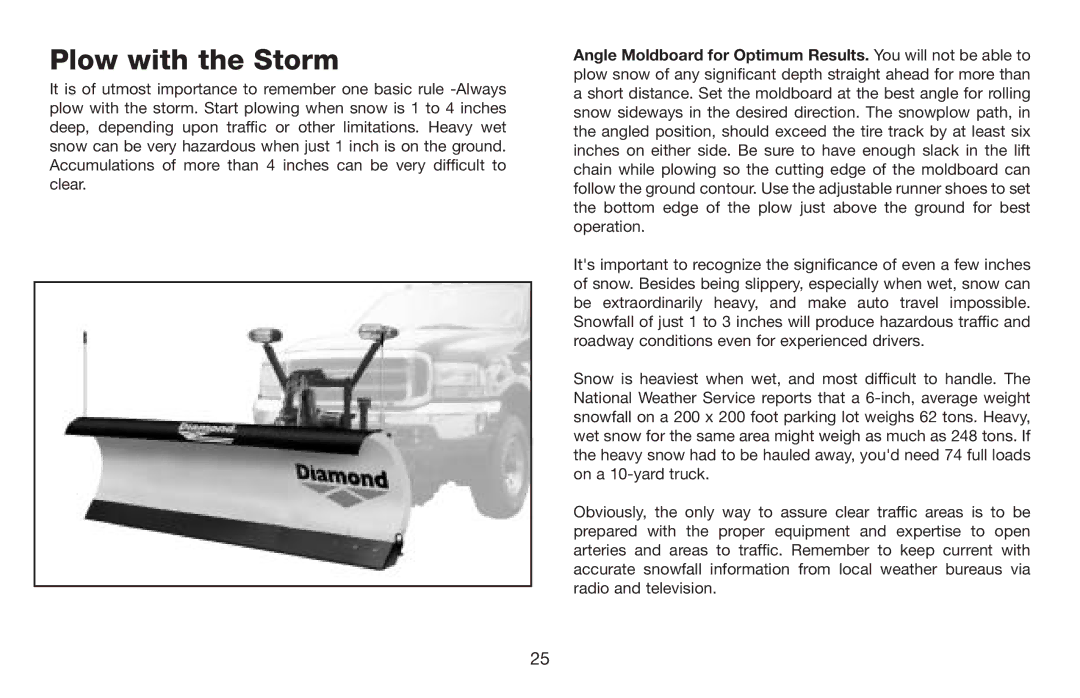
Plow with the Storm
It is of utmost importance to remember one basic rule
Angle Moldboard for Optimum Results. You will not be able to plow snow of any significant depth straight ahead for more than a short distance. Set the moldboard at the best angle for rolling snow sideways in the desired direction. The snowplow path, in the angled position, should exceed the tire track by at least six inches on either side. Be sure to have enough slack in the lift chain while plowing so the cutting edge of the moldboard can follow the ground contour. Use the adjustable runner shoes to set the bottom edge of the plow just above the ground for best operation.
It's important to recognize the significance of even a few inches of snow. Besides being slippery, especially when wet, snow can be extraordinarily heavy, and make auto travel impossible. Snowfall of just 1 to 3 inches will produce hazardous traffic and roadway conditions even for experienced drivers.
Snow is heaviest when wet, and most difficult to handle. The National Weather Service reports that a
Obviously, the only way to assure clear traffic areas is to be prepared with the proper equipment and expertise to open arteries and areas to traffic. Remember to keep current with accurate snowfall information from local weather bureaus via radio and television.
25
